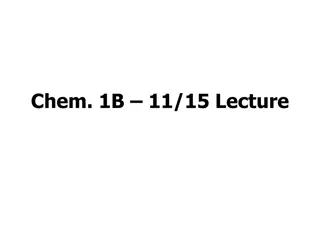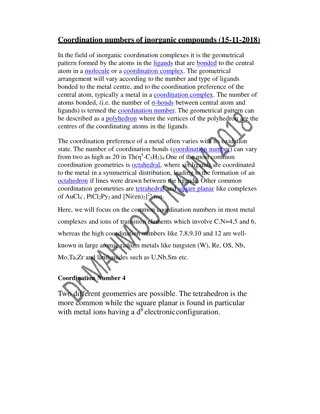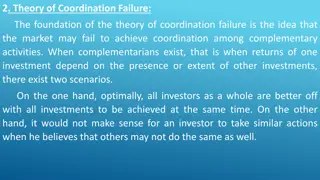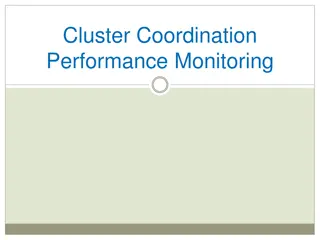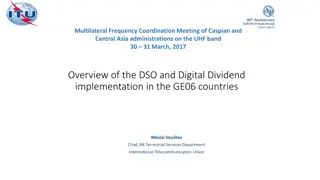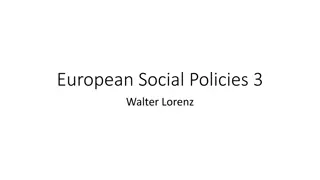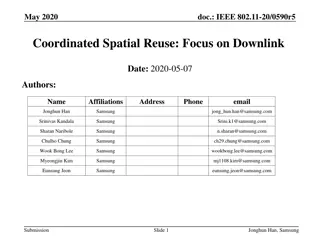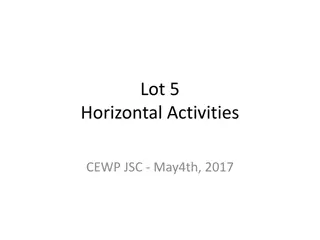Policy Goals and Objectives in the Social Open Method of Coordination
The Social Open Method of Coordination (OMC) is a voluntary political cooperation process that focuses on agreeing on policy goals, common objectives, and measuring progress with common indicators. It involves stakeholder collaboration, integration of economic and social policies, and promoting social well-being. The Social Protection Committee (SPC) and the Indicators Sub-Group (ISG) play essential roles in developing indicators and monitoring social conditions within the EU. Various tools and reports are used to track progress in social protection and inclusion policies.
Download Presentation

Please find below an Image/Link to download the presentation.
The content on the website is provided AS IS for your information and personal use only. It may not be sold, licensed, or shared on other websites without obtaining consent from the author. Download presentation by click this link. If you encounter any issues during the download, it is possible that the publisher has removed the file from their server.
E N D
Presentation Transcript
POLICY GOALS AND OBJECTIVES IN WELL-BEING MEASUREMENT THE EXAMPLE OF THE SOCIAL OPEN METHOD OF COORDINATION 10THCONFERENCE SOCIAL MONITORING AND REPORTING IN EUROPE OCTOBER 26-28 2015, VILLA VIGONI H KAN NYMAN (MINISTRY OF HEALTH AND SOCIAL AFFAIRS, SWEDEN) SPC/ISG DELEGATE
OUTLINE 1. THE SOCIAL OMC CONTEXT 2. POLICY GOALS, COMMON OBJECTIVES AND INDICATORS 3. THE PROCESS OF DEVELOPING AND ADOPTING INDICATORS
THE SOCIAL OPEN METHOD OF COORDINATION A voluntary process (since 2000) for political cooperation based on Agreeing policy goals and common objectives Measuring progress towards these goals using common indicators. Involves close co-operation with stakeholders, including social partners and civil society Integration of economic, social and employment policies.
THE SOCIAL PROTECTION COMMITTEE (SPC) An EU advisory committee (TFEU, art 160) Participation of both member states and the commission Mandate to monitor social conditions in the EU and the development of social protection policies Promotes discussion and coordination of policy approaches among governments and the commission. Prepares council discussions Examines the country specific recommendations proposed by the commission and reviews implementation
THE INDICATORS SUB-GROUP OF THE SPC (ISG) Develops and defines EU social indicators within three strands: Social inclusion Pensions Health and long-term care (+ Thematic) Carries out analytical work based on agreed indicators Develops analytical frameworks to support policy reviews conducted by the SPC Participation of both member states and the commission
INDICATORS AND TOOLS Portfolio of EU social indicators for the monitoring of progress towards the EU objectives for Social Protection and Social Inclusion Used in various contexts, e.g. SPPM (Social Protection Performance Monitoring) JAF (Joint Assessment Framework) SPC Annual Report Thematic Reports (e.g. child poverty, pensions ) Peer Reviews National reform program, National social reports,
2. POLICY GOALS, COMMON OBJECTIVES AND INDICATORS
GOALS AND COMMON OBJECTIVES The commonly agreed EU objectives on social protection and social inclusion agreed first in 2001 and have slightly evolved over time. Current ones adopted in 2011 by the EPSCO Reinvigorating the social OMC in the context of the Europe 2020 strategy .
STRUCTURE OF THE OBJECTIVES 1. The Overarching objectives for social protection and social inclusion including EU2020 2. Social inclusion strand 3. Adequate and sustainable pensions 4. Accessible, high-quality and sustainable healthcare and long-term care
The overarching objectives for social protection and social inclusion are to promote: a) social cohesion, equality between men and women and equal opportunities for all through adequate, accessible, financially sustainable, adaptable and efficient social protection systems and social inclusion policies; b) effective and mutual interaction between the Europe 2020 objectives of smart, sustainable and inclusive growth, taking full account of the relevant social provisions of the Lisbon Treaty; c) good governance, transparency and the involvement of stakeholders in the design, implementation and monitoring of policy.
THE EU SOCIAL INDICATORS - OVERVIEW Overall architecture of the portfolio identical to that of the EU objectives, ca 150 + indicators Overarching (+ context information) Social Inclusion (primary, secondary, context) Pension (dimensions, primary, secondary, context) Health and Long-term care (dimensions, primary, secondary, context) Thematic Types of indicators Commonly agreed EU indicators , Commonly agreed national indicators , Context information Basis for monitoring tools, reporting and in-depth reviews Continuously being developed and improved as statistics, data collection and policy needs evolve.
3. THE PROCESS OF DEVELOPING AND ADOPTING INDICATORS
THE PROCESS OF DEVELOPING INDICATORS (1) Policy Objectives and goals: Political, the COM, SPC/ISG, Ad hoc Interpret, analyze, dialogue, prioritize (quality): SPC/ISG, COM, Experts, Stakeholders Co-operation: EU committees (EMCO, EPC, High-level groups), Eurostat, Researchers, International org. (OECD, ILO ) Adoption (negotiation): SPC/ISG, COM
DEVELOPING INDICATORS (2) Further development needs of indicators (some examples) Child deprivation indicator Benefits coverage Number of pension beneficiaries Gender pensions gap Mortality, life expectancy and healthy life years by socio-economic status Preventable /Avoidable mortality Well-being Mental health of young people
THANK YOU! PORTFOLIO OF EU SOCIAL INDICATORS FOR THE MONITORING OF PROGRESS TOWARDS THE EU OBJECTIVES FOR SOCIAL PROTECTION AND SOCIAL INCLUSION 2015 UPDATE http://ec.europa.eu/social/BlobServlet?docId=14239&langId=en or http://ec.europa.eu/social/main.jsp?catId=756&langId=en



